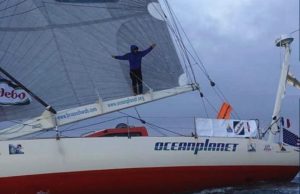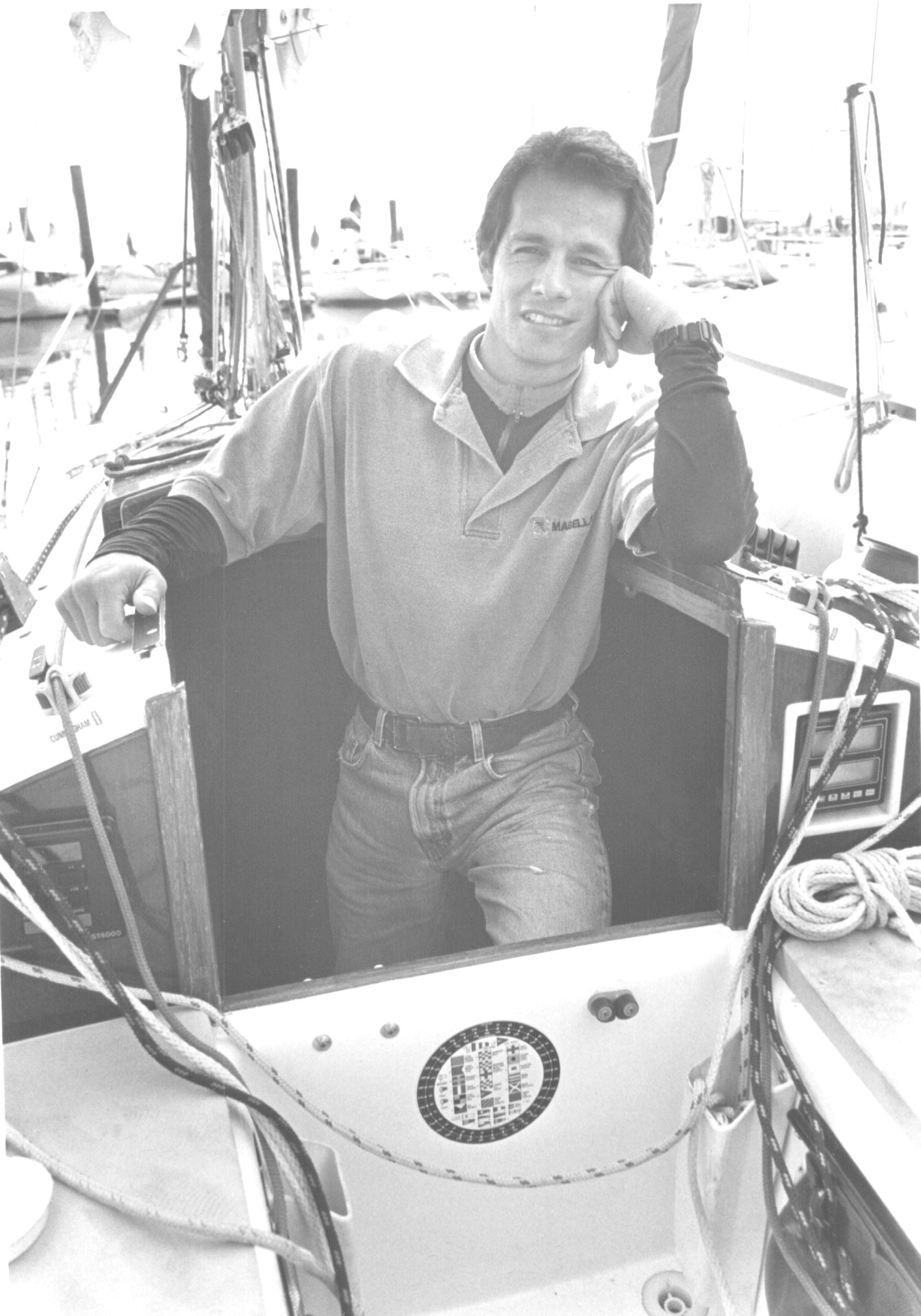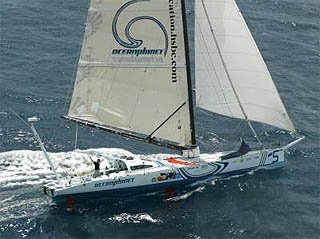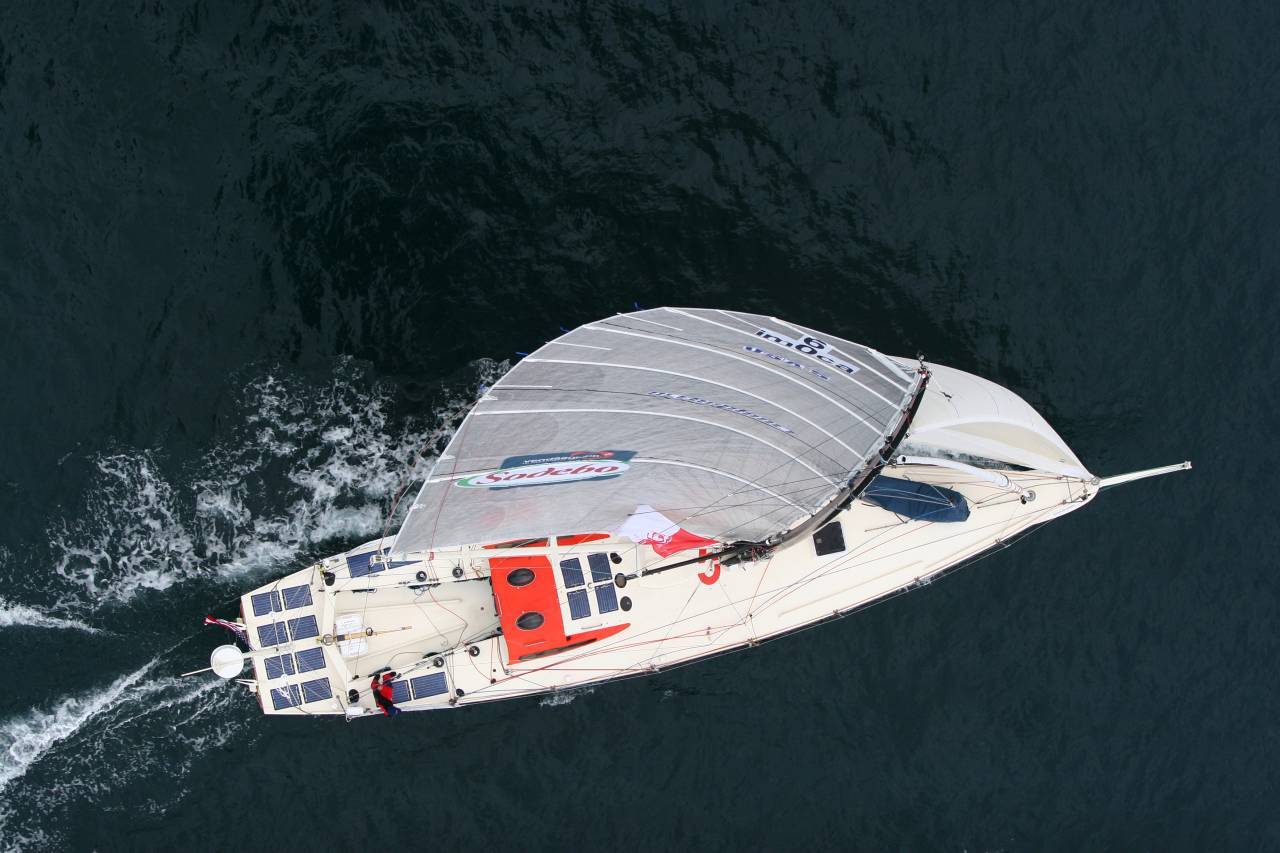About Ocean Planet
Ocean Planet, an open ocean racing vessel designed by Tom Wylie, and built by Schooner Creek Boat Works in 1999, sailed around the globe twice, conveying a life long dream and a sense of ocean exploration for a generation of sailors and students.





The Origins
1979 – 2002
Starting in 1979, Bruce Schwab spent a year in Santa Cruz racing ultralight displacement sailboats, and went on to start working and racing in the San Francisco Bay area in 1980.
Working as a rigger at Svendsen’s Boat Works allowed Schwab to learn many aspects of boat design, fabrication, painting, composites, and especially preparation for ocean racing. After having worked at Svendsen’s for nearly 20 years, at the end of 1999 he left to form Rumbleseat Rigging. At that time he began efforts to design and build an Open 60 Class boat for the 2000 Vendee Globe Race — which no American had yet officially finished.
Although Schwab was not able to secure a corporate title sponsor to build his new Tom Wylie designed Open 60 (most Open 60 Class, or IMOCA 60 boats are corporate-sponsored), an alliance of many individuals and marine industry partners came to his aid. Together they formed the Made in America Foundation to raise funds and gained further grass roots support for the project. Thousands of supporters from across the USA made contributions to the dream. Special recognition has to be given to Kevin & Shauna Flanigan, who made it possible to turn the organization into The Ocean Planet Foundation, with an emphasis on awareness and preservation of the world’s oceans. The huge help of the Flanigans made it possible for Schwab and Tom Wylie to build and launch the boat at Schooner Creek Boat Works in Portland, Oregon and christened Ocean Planet. Over the course of the adventures, this support allowed Schwab to collaborate with many educators & classrooms to share the adventure.
When Schwab fell short of his objective of having OceanPlanet ready for the 2000 Vendee Globe, fellow American solo Racer Brad Van Liew convinced Schwab to race the 2002–2003 Around Alone race (formerly the BOC Challenge and now the Velux 5 Oceans Race) upon the boats completion.
OceanPlanet had a narrow beam, seawater ballast, and an 80-foot unstayed and rotating carbon fiber mast. Schwab and Wylie discussed the factors that went into OceanPlanet’s design in an interview with Latitude 38 Magazine in August 2001.
Schwab was the only American entered in the Around Alone Open 60 class, and also the only Class 1 entry without a title sponsor (Americans Brad Van Liew and Tim Kent raced in Class 2). In the first leg of the race (to Brixham, England), OceanPlanet’s boom broke, requiring 1,000 nautical miles (1,900 km) of sailing without the mainsail to finish the leg. Later in the race, on leg 3 (Cape Town to New Zealand), Schwab suffered a water ballast tank leak which flooded the boat. On leg 4, to Brazil, the boat was hit by a giant breaking wave and the boom broke again. Schwab sailed around Cape Horn without the mainsail, stopping in Port Stanley in the Falkland Islands long enough to repair the boom. Schwab made it to the finish of the Around Alone in Newport, Rhode Island on May 5, 2003 becoming the 240th person to solo circumnavigate the globe.
Vendée Globe
2004 – 2005
After completing the Around Alone race, Schwab set out to modify his Open 60 racing yacht to prepare for the nonstop Vendee Globe race in 2004–2005, bringing her up to the technical standards of the International Monohull Open Class Association (IMOCA). The race, starting in Les Sables D’olonne, France, required the sailors to race through the “Roaring Forties” and “Furious Fifties” latitudes. Dangers faced ranged from hitting an iceberg to the high velocity unchecked waves. On February 25, 2005, Schwab completed the Vendee Globe in 9th place becoming the first American to officially finish and the 254th person to solo circumnavigate the globe, with an official time of 109 days, 19 hours, 58 minutes and 57 seconds. This included a sustained average speed of 17.9 knots for over 6 hours, single-handed. Schwab maintained media contact during the race participating in 29 interviews with Ronn Barr of Sports Byline Radio. During the race Schwab operated the OceanPlanet Foundation as an educational forum, as thousands of students and sailors followed the boat and expanded their knowledge of sailing.

